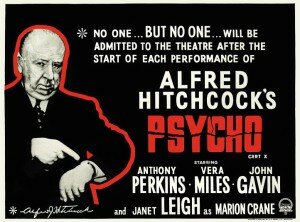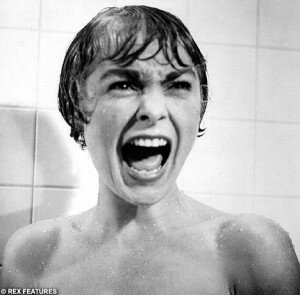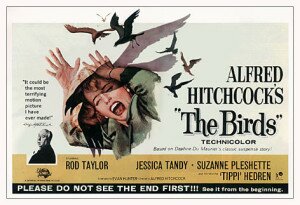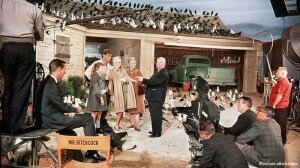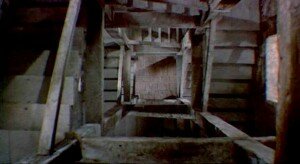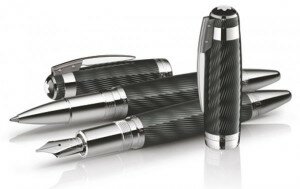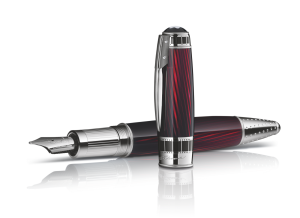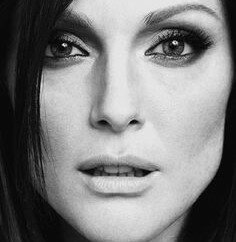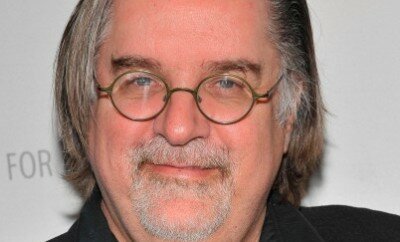Alfred Hitchcock: Net worth, Money and More
NET WORTH OF ASSETS AT THE TIME OF DEATH: $200 million.
Writer, filmmaker, director, producer, film editor.
Born on 13 August 1899 in Leytonstone, a part of London, England, Alfred Hitchcock was the youngest of three children born to William Hitchcock, a greengrocer and poulterer and Emma Jane Hitchcock. He led a lonely and sheltered childhood which was made worse by his obesity. This would go on to deeply affect his psyche as he grew older. It also led to him being rejected by the army at the age 15 during the First World War. However, he did not allow this to deter him and as a young man, he signed up to a cadet regiment of the Royal Engineers in 1917. His military stint was limited to theoretical briefings, weekend drills and various other exercises.

A young Alfred Hitchcock
He eventually left St. Ignatius to study at the London Country Council School of Engineering and Navigation in Poplar, London. Upon leaving, he found work as a draftsman and advertising designer with a cable company called Henley’s. This would help him make his first steps into the world of creativity. The company’s in-house publication The Henley Telegraph, was founded in the year 1919, to which he would often contribute short articles. Eventually, he became one of its most prolific contributors. His first piece was “Gas” and it was published in the first issue of the company’s publication. The story narrates the experience of a young woman who images she is being assaulted one night in Paris- only for it to later be revealed that it was a hallucination at the dentist’s chair, caused by an anesthetic he used. Another very short, but remarkable contribution by Hitchcock to the publication was a piece titled “Fedora.” It was published in 1921 and it had a strikingly accurate description of his to-be wife Alma Reville; whom interestingly enough, he had not met at that point of time.
FILM CAREER
During his stint at Henley’s, he began to take interest in the nuances of photography. He began his work in the field of film production as a title card designer for the London branch of what later would be more famously known as Paramount pictures. He then received a full time job at Islington Studios, designing titles for silent films. It was from here on wards, that his rise began, from title designer, to film director, producer and editor in a period of five years.
In 1925, Hitchcock went on to direct his first film, making movies that belong to the thriller genre which would soon be known world over. It was a silent film that went by the name “The pleasure garden.” He went on to make many more such silent films. Some of them include The Lodger (1926), Downhill (1927), Easy Virtue (1927), The Ring, The Farmer’s wife (1927), Champagne (1928), The Manxman (1929), Blackmail (1929). By then, Hitchcock had made his first Talkie. Though “Blackmail” was initially produced as a silent film, it was reproduced as a talkie film.
Hitchcock went on to direct about 53 films in the three genres- the silent film, the black and white and colour. Notably, he delivered movies that would go on to become epics in their own right in each category. Hitchcock believed that silent film was the purest form of film. At this point in time onwards, he began pursuing themes such as sexual obsession and characters who were wrongly persecuted for others’ crimes. These themes would prevail throughout his career, with Hitchcock experimenting with various technical aspects of films that would later be used frequently in cinema.
EXPERIMENTS WITH CINEMA
Hitchcock’s earliest experiment in cinema was when he shot thee 1948 thriller Rope. It was not well received by the critics, but it went on to be one of his most legendary movies. During the course of filming Rope, Hitchcock intended for the film to have the effect of one long continuous take, but the cameras at that point in time were not so advanced. They could hold no more than 1000 feet of 35 mm film. As a result, each take used up to a whole roll of film and lasts up to 10 minutes. This caused the movie to move at a slow pace, causing the audience to build up guilt and share the feelings of the antagonist until the movie draws to an end. Many takes end with a dolly shot to a featureless surface (such as the back of a character’s jacket), with the following take beginning at the same point by zooming out. The entire film consists of only 11 shots.
Hitchcock was also famous for the creative special effects used throughout his movies. His experiments were mostly successful, though some of them were not well received by the critics of that time. It was one of these trysts with experimentation that led him to produce his most iconic film Psycho (1960). By this time, Hitchcock had began to comfortably work with colour film and sound, but Psycho was a film that he purposefully chose to shoot in black and white. The concepts he centred his movie around were indeed, controversial- so controversial that Paramount pictures were appalled at the concept of a movie being based on the real life story of Wisconsin murderer Ed Gein. Paramount pictures refused to provide the budget that they normally would have (His previous movie, North by Northwest [1959] was granted a generous budget of $3,101,000.) Hitchcock however, was adamant upon pursuing this project and he decided to finance 60% of the budget himself with the help of his own Shamley studios, shooting the movie in Universal studios. Hitchcock purchased the rights to the novel (written by Robert Bloch based on the life story of Ed Gein) for $9500 and had it taken off bookshelves across the country, in order to preserve the suspense.
The infamous shower murder scene of Psycho caused the censor board authorities to do a double take. It was the first time that a toilet was being shown in American cinema. The following shower murder scene is no less. The scene had to be shot over a period of one week, and the scene itself was composed of 90 shots; which were captured from 70 different camera angles. This took a week to shoot; the entire movie itself took only 6 weeks to complete.
One cannot talk about special effects without speaking about his classic favourite The Birds (1963). The movie is centred around technical strengths in the form of special effects that do not distract the viewer from the plot or the movie itself, yet adds intense shock value to the movie. The final shot of the movie involves the lead characters driving away from Bodega Bay (where it was shot; in San Francisco) as they are being closely watched by a flock of birds. This was the film’s trickiest shot as it was done with a combination of live trained birds, puppet birds and animated birds; with the car moving towards an extremely detailed matte painting as a backdrop. It was the trickiest shot in the movie as it was shot in a composite manner that blended 32 separate exposures, leading Hitchcock to call it “The most difficult single shot I’ve ever done.
In his next film, Vertigo (1959), Hitchcock used what would later be a very powerful effect which would later come to be popularly known as the Dolly zoom method. It was achieved by zooming in on a zoom lens in order to achieve the desired result- a successful portrayal of James Stewart’s supposed Vertigo- fear of heights.
PERSONAL LIFE
Hitchcock was a frugal man, probably because of his strict upbringing. When he died, he left millions of dollars in stocks and bonds, two magnificent estates in California- one in Santa Cruz and one in Bel Air to his family who survived him- Alma Reville and his daughter Patricia Hitchcock.
Years later(2012 to be precise), famous pen manufacturer Mont Blanc decided to pay a tribute to the iconic filmmaker with the help of their pens. Two of them were introduced-
1. The limited edition 300
As a tribute to the critically acclaimed filmmaker, this particular pen features 925 sterling silver rings with 53 hatch marks that represent the years he spent as a part of his film-making career. It is available at Mont Blanc boutiques throughout the world and is priced at £2,325.
2. The limited edition 80
This pen is created exclusively with 750 white gold and just 80 of these pens were produced. They retail at £17,900 per piece. It features a dramatic swirls, said to be a tribute to the famous Alfred Hitchcock phenomenon ‘The Vertigo effect’, complete with re; reminiscent of blood stains. The clip of the pen is shaped like the knife used by the killer of his famous movie Psycho and it is encrusted with diamonds.


